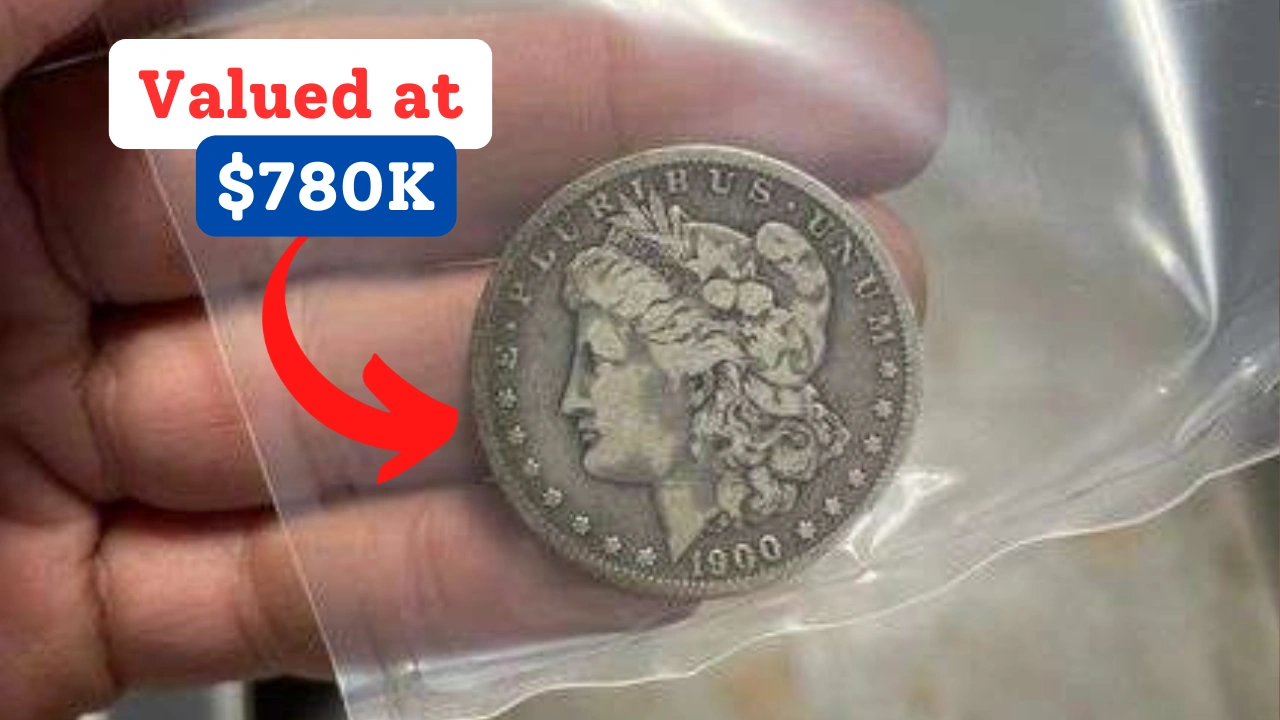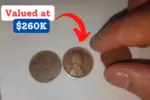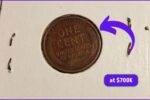The Lincoln Wheat Penny Value at $780K: At first glance, the Lincoln Wheat Penny may seem like an ordinary coin with little more than a nostalgic design. However, certain rare variations of this penny have fetched jaw-dropping prices at auctions, with some valued at hundreds of thousands or even millions of dollars. One of the most famous, the 1943 copper penny, once sold for an astounding $1.7 million. Some experts predict that, in pristine condition, its value could climb as high as $780K
Even more thrilling is the possibility that these rare coins might still be hiding in everyday circulation, waiting for a lucky collector to stumble upon them.
The Birth of a Numismatic Icon
In 1909, to celebrate the 100th anniversary of Abraham Lincoln’s birth, the U.S. Mint introduced the Lincoln Wheat Penny. Designed by renowned sculptor Victor David Brenner, it was the first U.S. coin to feature a real historical figure rather than a symbolic image.
- Front (Obverse): A striking portrait of Lincoln, capturing the essence of his legacy.
- Back (Reverse): Two wheat stalks flanking the denomination “One Cent,” symbolizing America’s agricultural roots.
Minted primarily in copper, the Lincoln Wheat Penny remained in production until 1958, making it one of the longest-running coin designs in American history.
What Makes Certain Lincoln Wheat Pennies So Valuable?
Not every Lincoln Wheat Penny holds extraordinary value, but a handful of rare editions and minting errors have transformed some into collectors’ treasures. Let’s explore the factors that contribute to their staggering worth.
1. Rare Minting Errors & Special Editions
Some pennies became valuable due to errors or limited mintage. Here are the most sought-after examples:
- 1943 Copper Penny: With the U.S. Mint switching to steel pennies in 1943 due to wartime copper shortages, a few leftover copper blanks from 1942 were mistakenly used to strike pennies that year. Only 20 to 40 are believed to exist, making them one of the most valuable error coins in history.
- 1909-S VDB Penny: Featuring Victor David Brenner’s initials (VDB), this rare first-year issue was minted in San Francisco, with just 484,000 produced. Collectors prize it for its historical significance and scarcity.
- 1955 Double Die Penny: A misalignment during the striking process resulted in a doubled appearance on the text and date. This unique mistake can make these pennies worth tens of thousands of dollars.
2. Rarity & Condition
The rarer the coin, the higher its potential value. Additionally, coin collectors, known as numismatists, evaluate a penny’s condition using a grading scale from 1 to 70. A well-preserved, uncirculated coin is far more valuable than a worn or scratched one.
3. Historical & Collectible Appeal
The Lincoln Wheat Penny marked a significant milestone in U.S. numismatic history by honoring a real person on currency. Certain variations, like the steel pennies of 1943, serve as reminders of wartime resourcefulness, further adding to their collectibility.
4. Increasing Demand from Collectors
The coin-collecting community is always on the lookout for rare finds. As more collectors enter the market, the demand and value of these historic pennies continues to climb.
The Legendary 1943 Copper Penny: A Numismatic Holy Grail
Among all rare pennies, the 1943 copper penny is arguably the most coveted. With fewer than 40 in existence, this error coin has reached astronomical prices at auctions. One of the most expensive examples sold for $1.7 million, and experts believe that, in flawless condition, it could one day break records by fetching upwards of $780K.
How Did This Mistake Happen?
In 1943, the U.S. Mint replaced copper pennies with zinc-coated steel versions to conserve copper for World War II. However, a few copper blanks from the previous year were accidentally used in the minting process, leading to the creation of this ultra-rare anomaly. Since the mistake wasn’t immediately discovered, a few of these pennies slipped into circulation, turning them into legendary collectibles.
Could Rare Lincoln Wheat Pennies Still Be in Circulation?
Surprisingly, yes! While most valuable pennies have been collected, a few may still be hiding in pocket change, piggy banks, or forgotten jars. Here’s why:
- Some owners might not recognize their value.
- Old coin collections are sometimes unknowingly spent.
- With billions of pennies produced, rare finds occasionally resurface.
How to Identify a Valuable Lincoln Wheat Penny?
Think you might have a hidden treasure in your coin jar? Follow these steps to determine its worth:
Check the Date & Mint Mark
- Look for key years like 1909-S VDB, 1914-D, 1943 copper, and 1955 Double Die.
- The mint mark (“S” for San Francisco, “D” for Denver) can indicate rarity.
Examine for Errors
- Doubled lettering or misaligned prints can signal a valuable error coin.
- Missing mint marks on certain years can make a coin extremely rare.
Weigh the Coin
- A standard copper penny weighs 3.11 grams.
- A 1943 steel penny weighs 2.7 grams. If your 1943 penny weighs more than 3 grams, you might have found a jackpot!
Use a Magnet Test
- Steel pennies stick to magnets, while copper pennies do not. If your 1943 penny doesn’t stick, you might be holding something priceless!
Assess the Condition
- A penny in pristine, uncirculated condition is far more valuable than one that’s scratched or worn.
- Never clean a rare coin, as this can reduce its value significantly.
What to Do If You Find a Rare Penny?
If you think you’ve stumbled upon a rare Lincoln Wheat Penny, follow these steps:
- Do Not Clean It! Cleaning can erase historical value.
- Get It Authenticated. Reputable services like PCGS or NGC can verify its legitimacy.
- Store It Properly. Use a protective holder to prevent damage.
- Consider Selling at Auction. Rare pennies often fetch the highest prices at numismatic auctions.
Other Lincoln Wheat Pennies That Could Be Worth a Fortune
While the 1943 Copper Penny is the most famous, several other Lincoln Wheat Pennies are highly valuable:
- 1909-S VDB – One of the rarest first-year issues, worth up to $100,000.
- 1922 No D Penny – A Denver-minted penny missing its “D” mint mark, often selling for thousands.
- 1955 Double Die Penny – A well-known error coin with values ranging from $1,000 to $100,000.
Final Thoughts: Check Your Pocket Change!
The Lincoln Wheat Penny isn’t just an ordinary coin; it’s a piece of American history with the potential to be worth a fortune. Whether you’re a seasoned collector or just someone curious about old coins, taking a closer look at your spare change might lead to an incredible discovery. Happy hunting!





